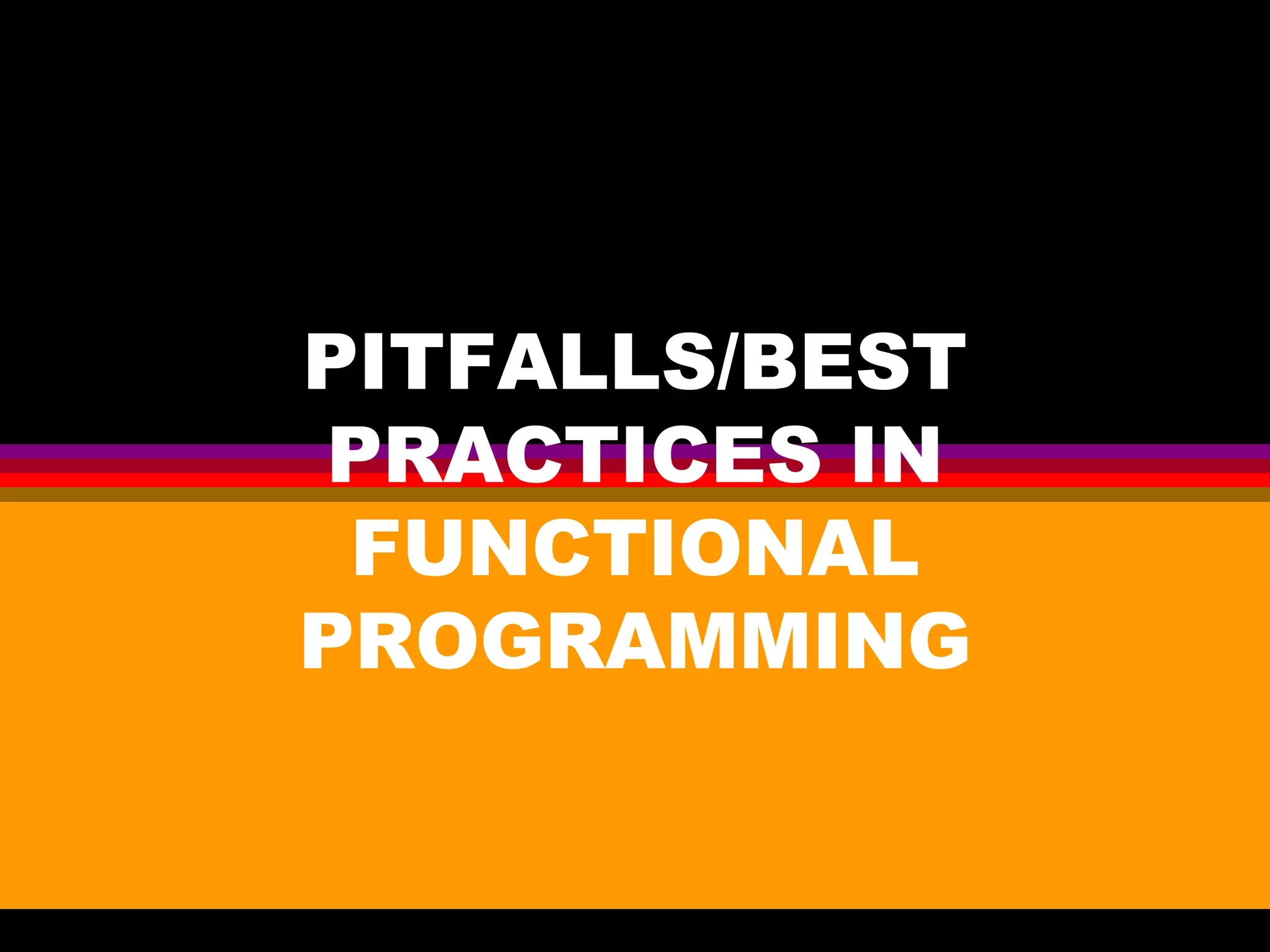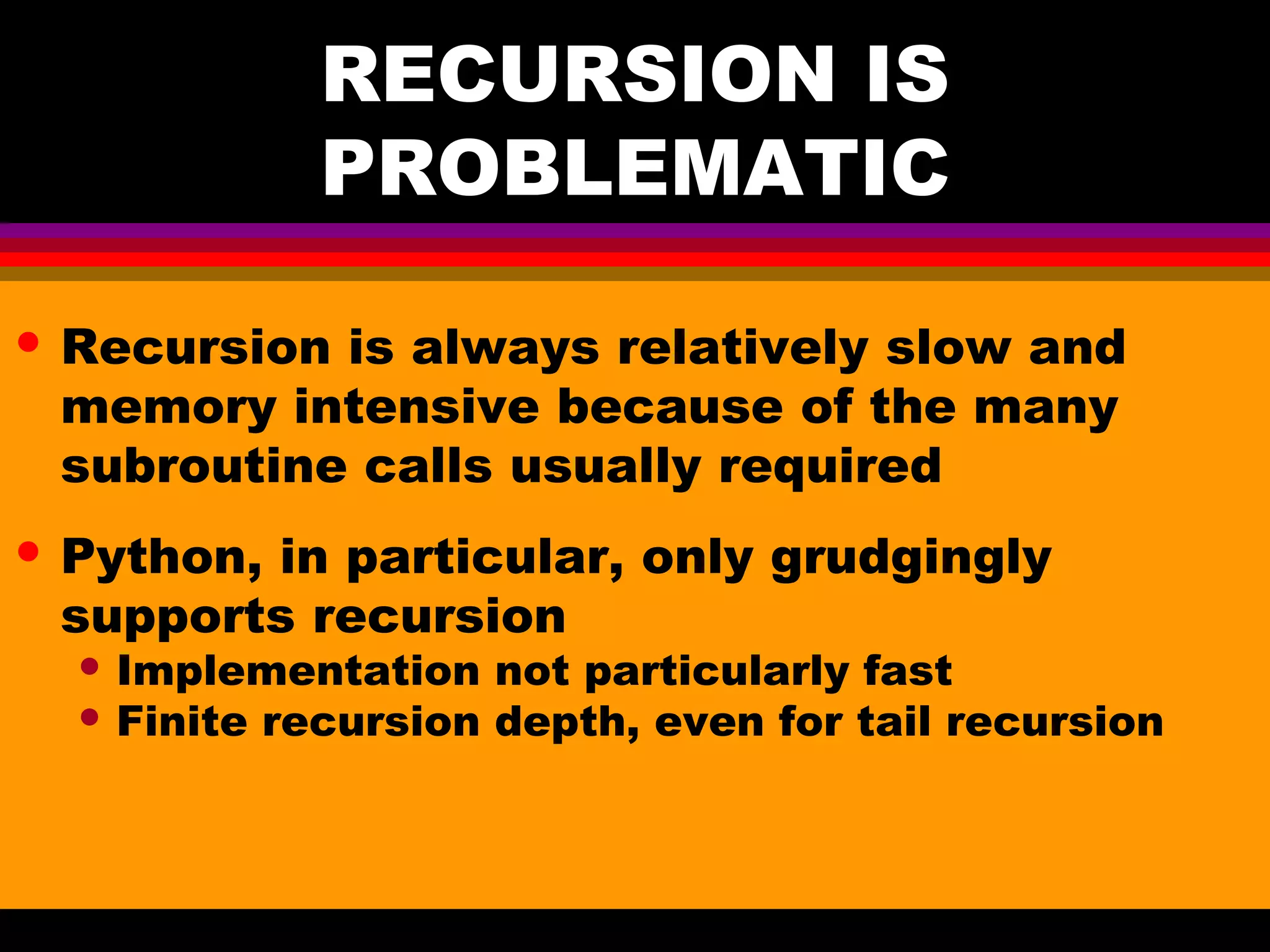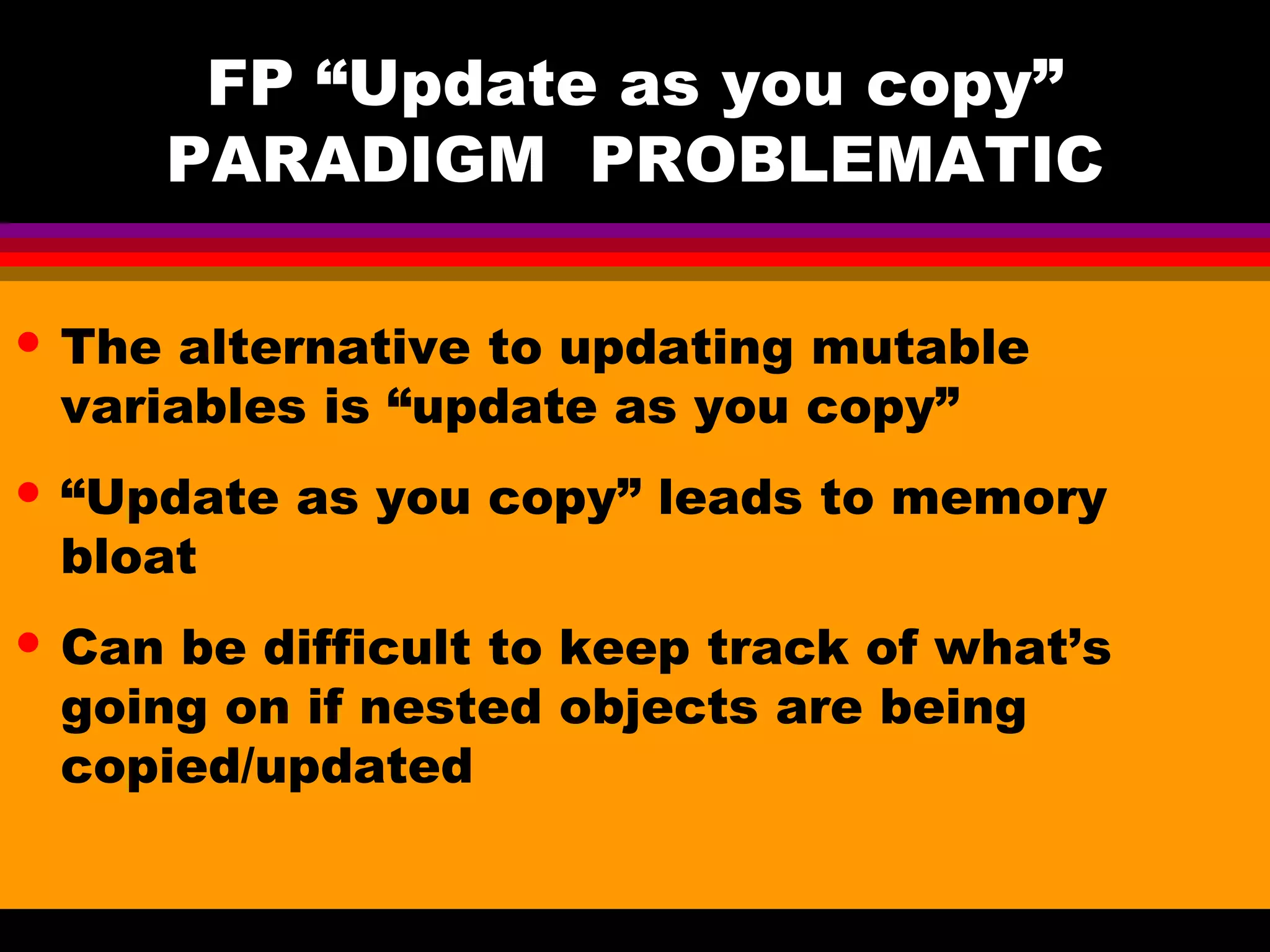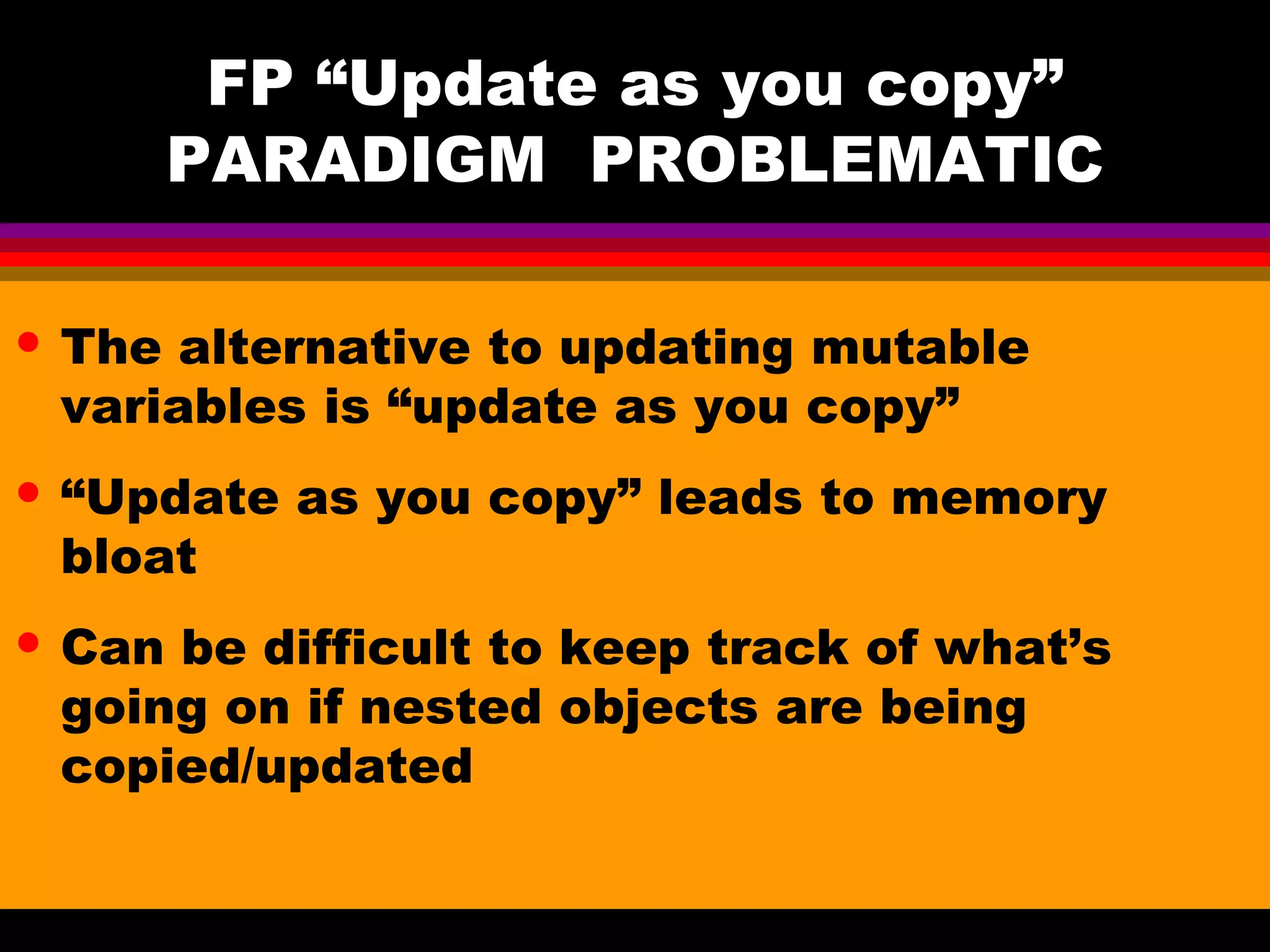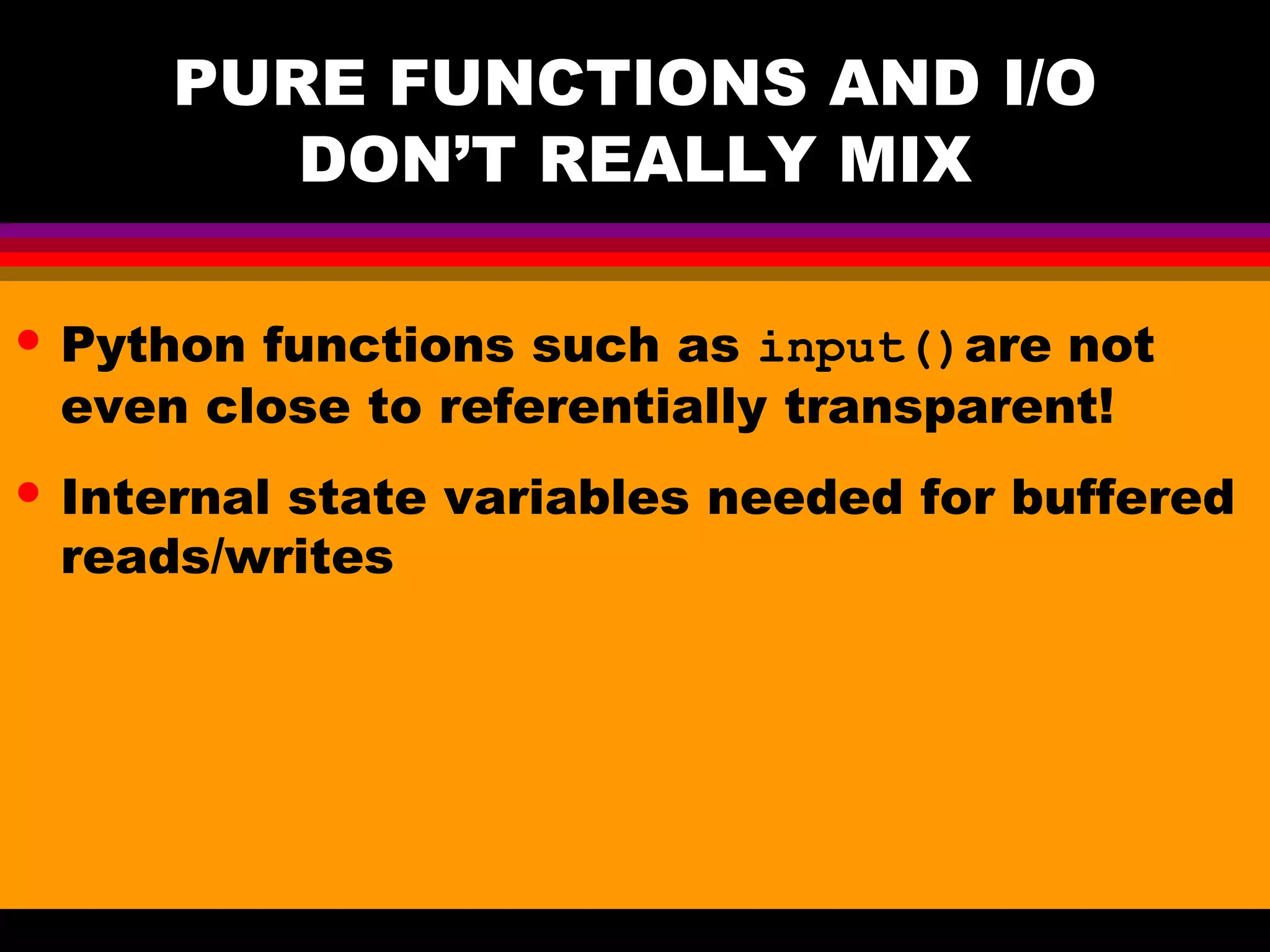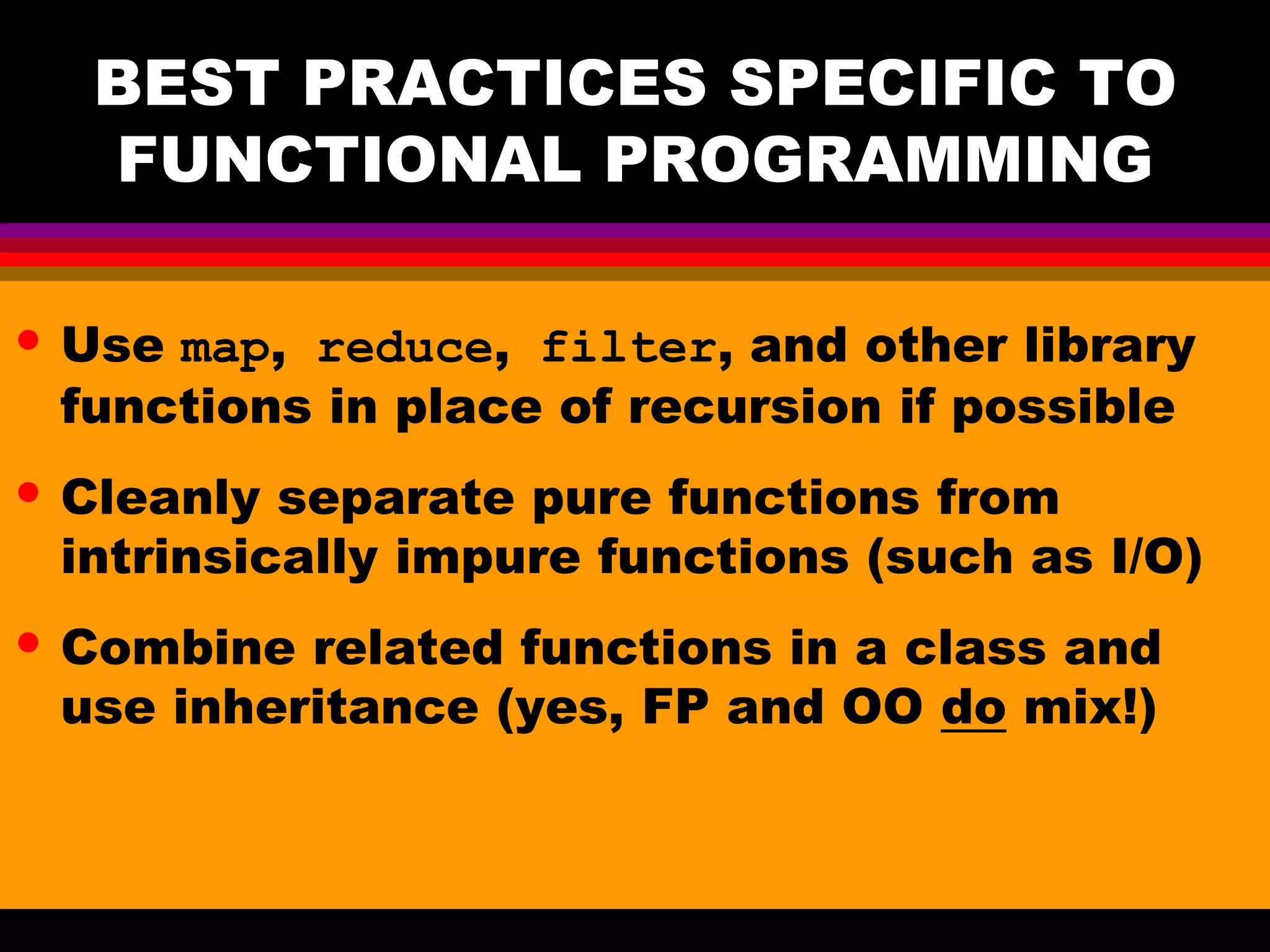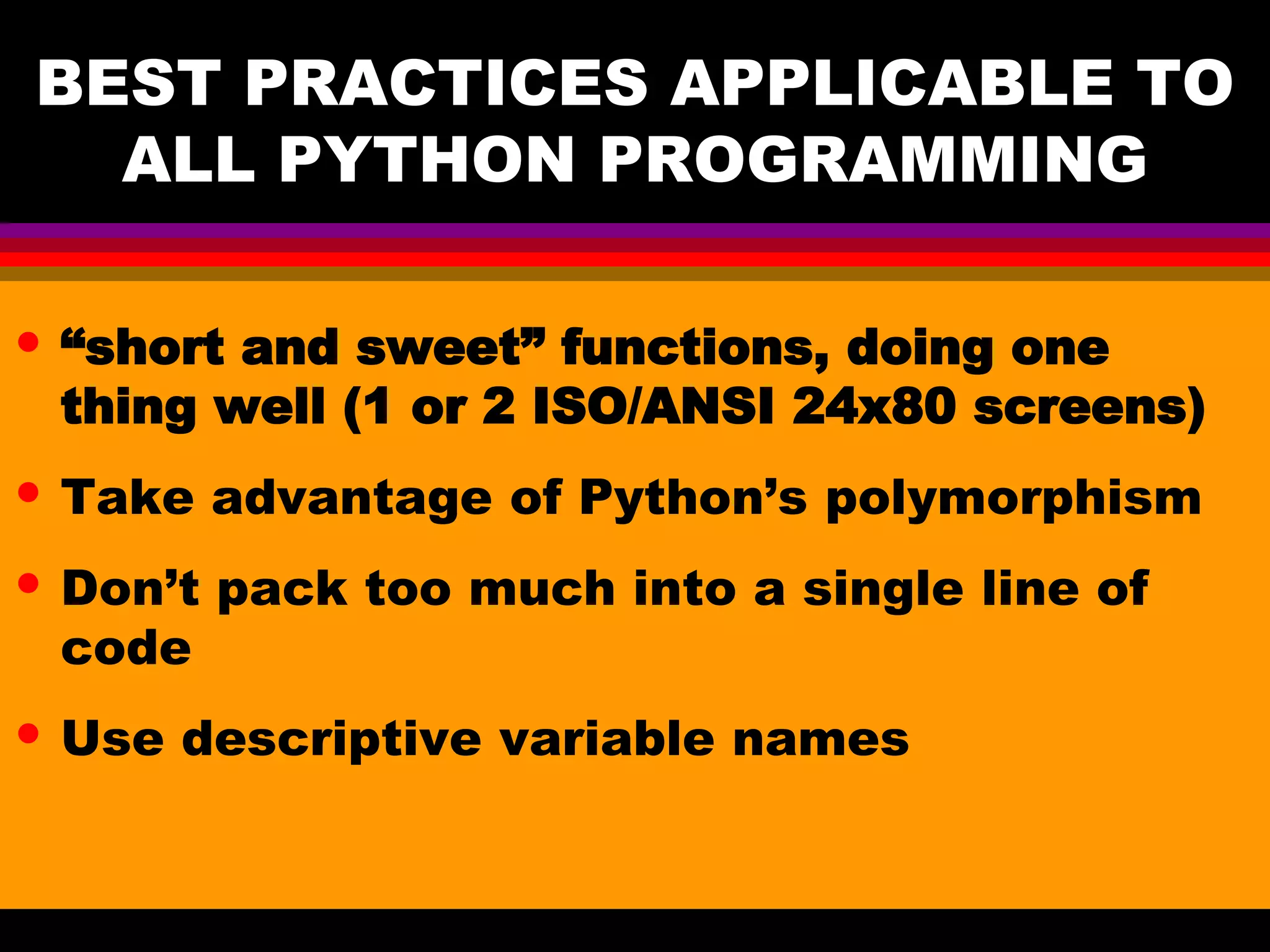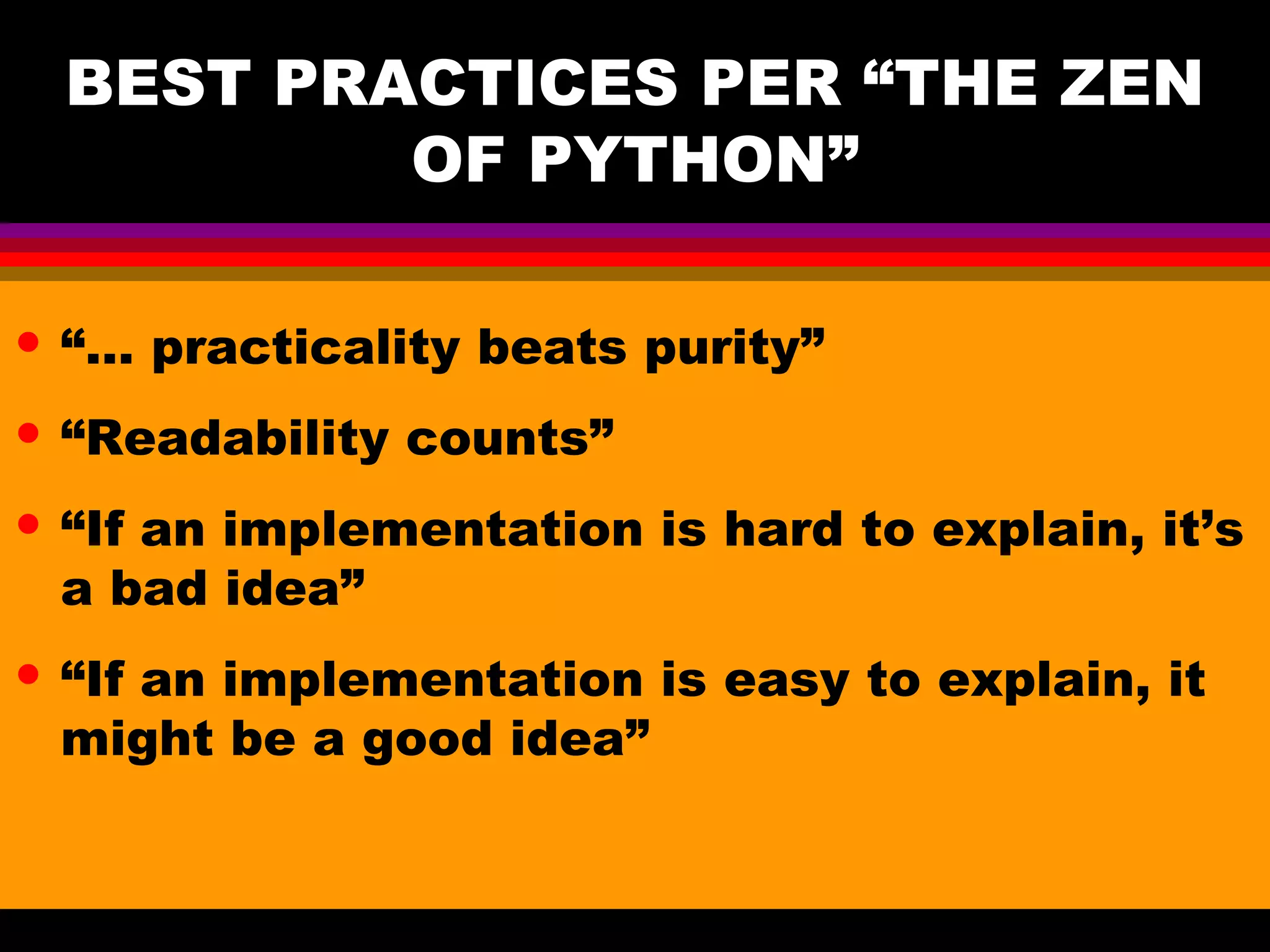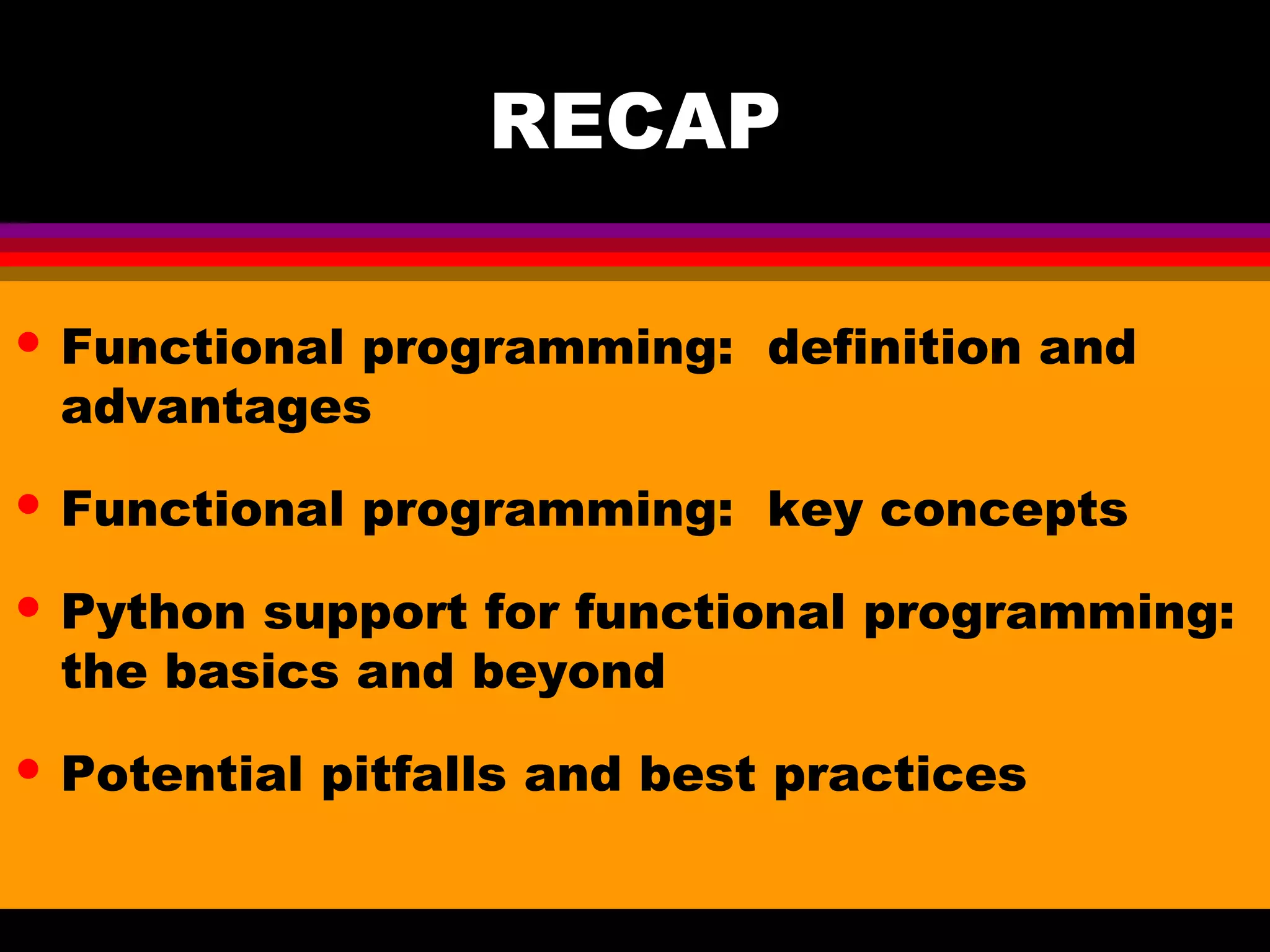Functional programming is a paradigm that treats computation as mathematical functions to avoid state changes and mutable data. Key concepts include pure functions, referential transparency, and higher-order functions. Python supports functional programming with recursion, lambda expressions, and functions as first-class objects. Potential pitfalls include recursion being slow, "update as copy" leading to memory bloat, and pure functions not mixing with I/O. Best practices include using library functions over recursion when possible and separating pure from impure functions.


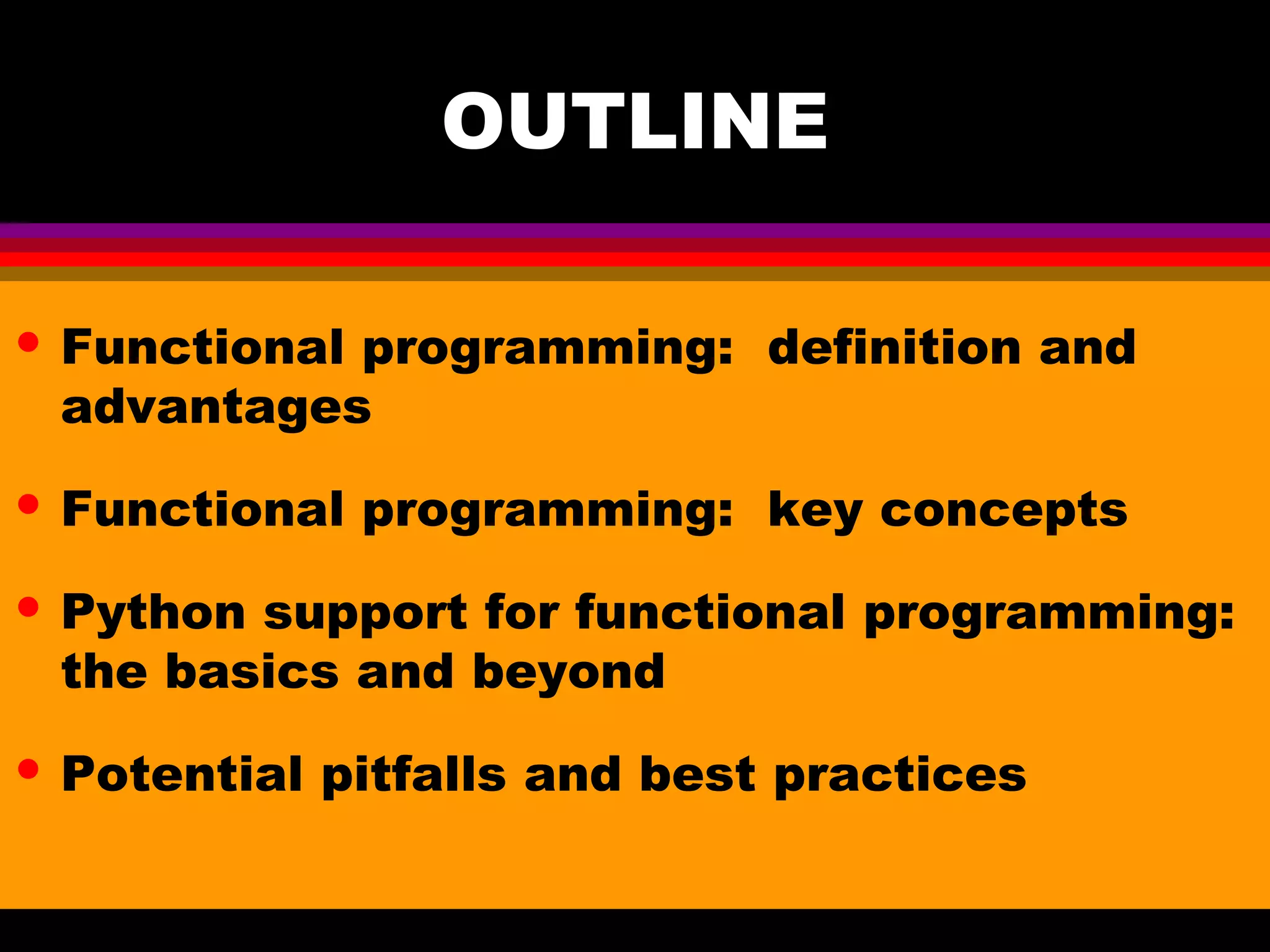
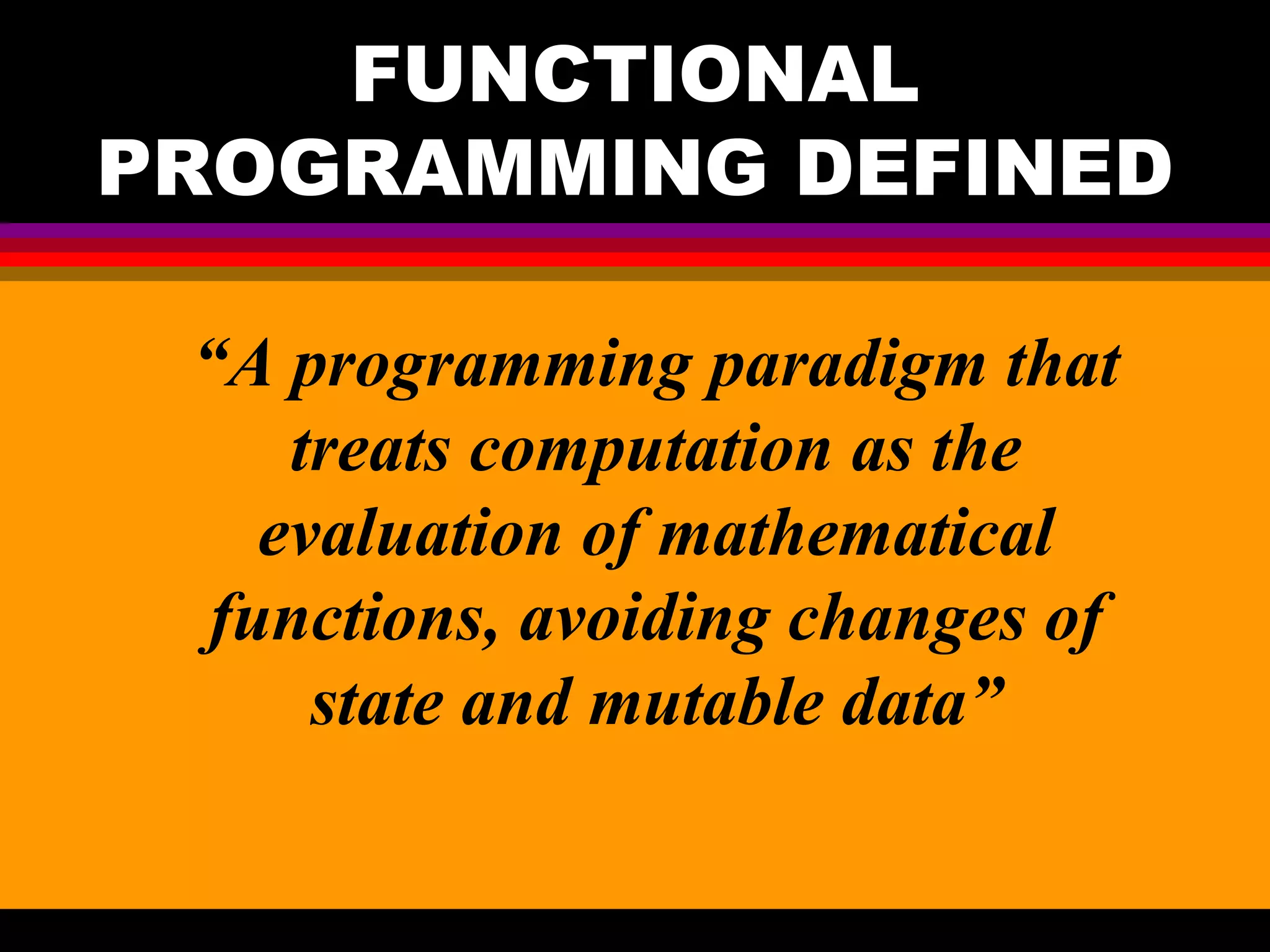
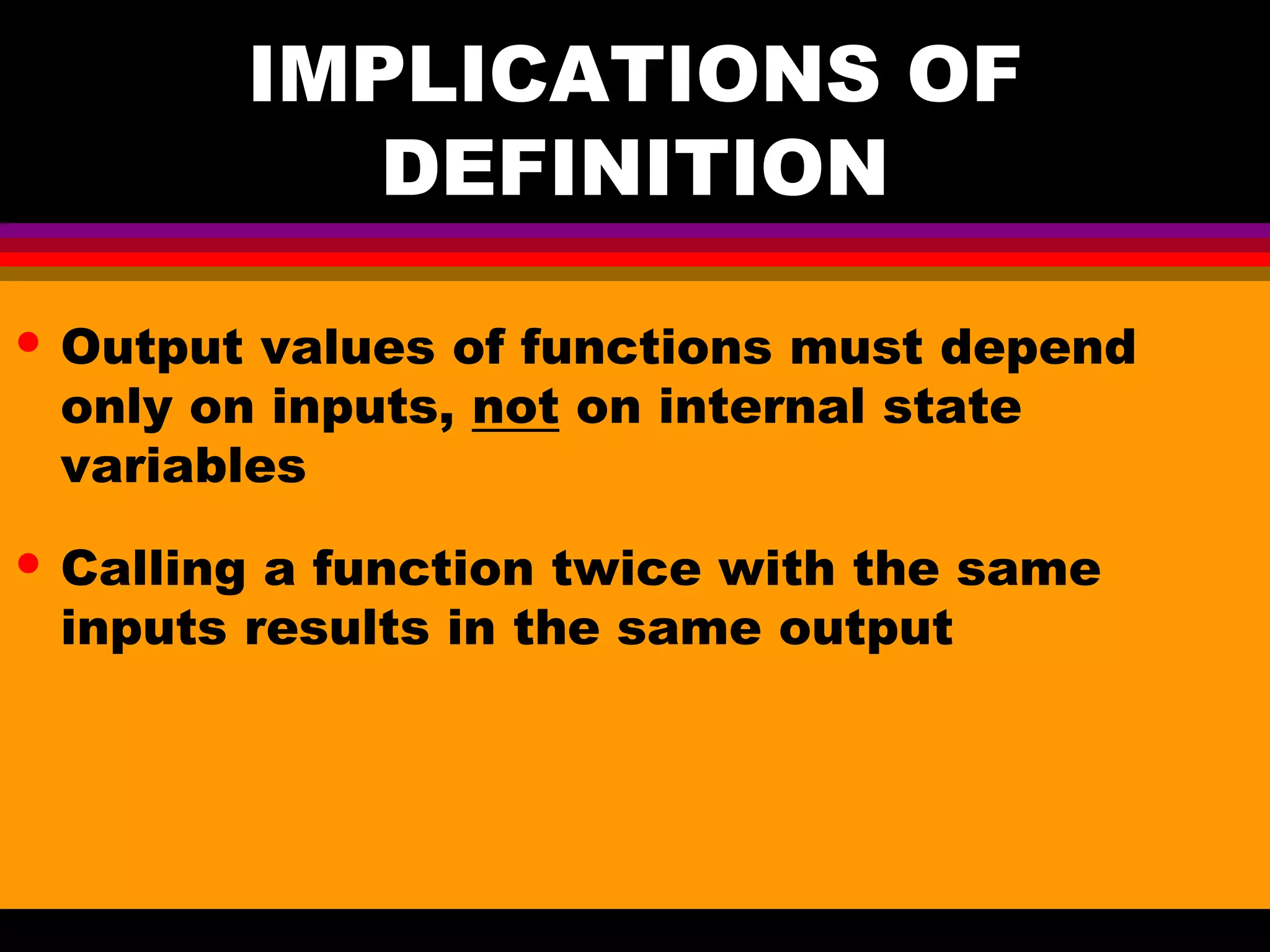
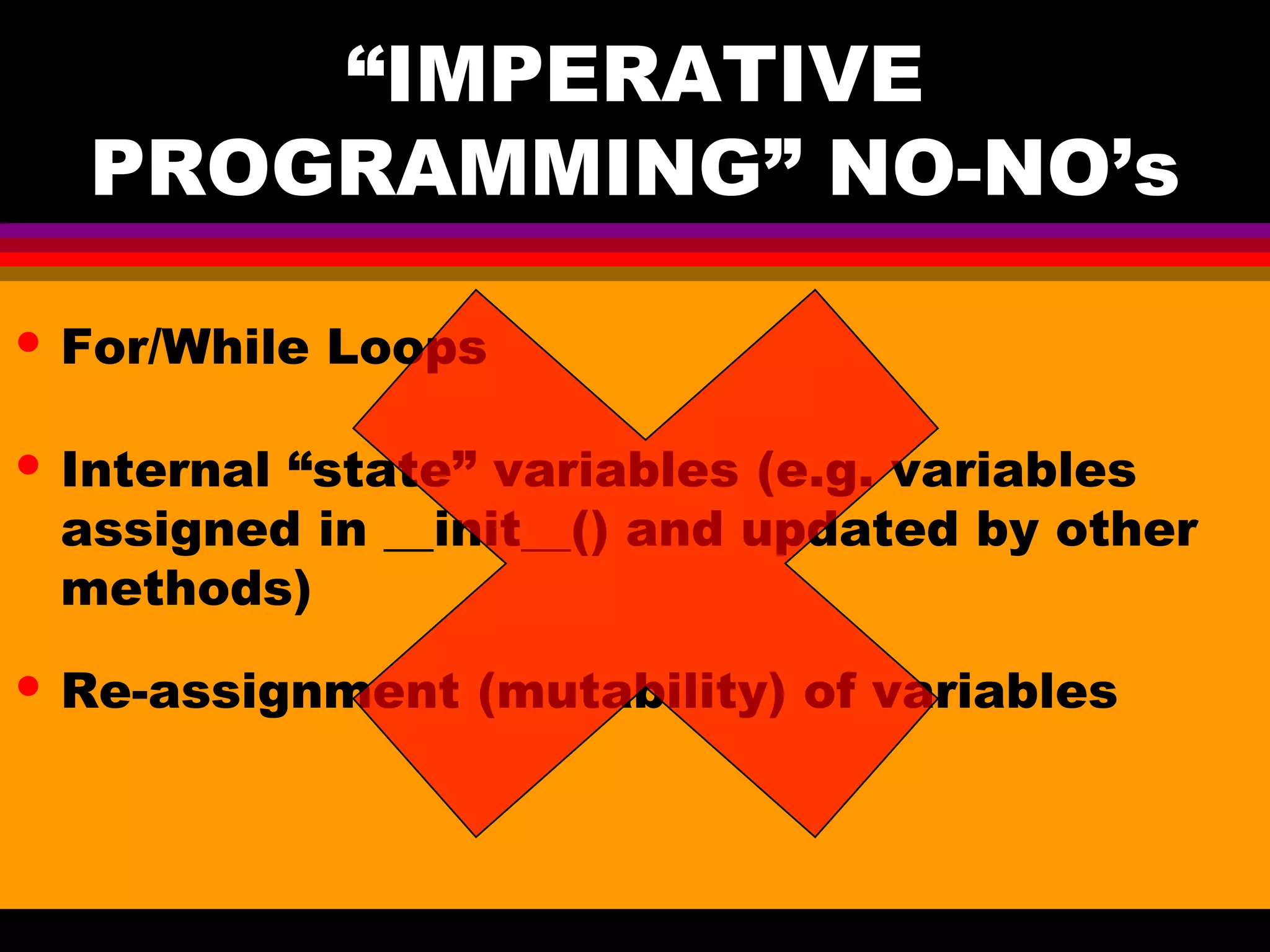

![IMPERATIVE VERSION OF QUICKSORT def quicksort(array): indexes_stack = list() idx = (0, len(array) - 1) indexes_stack.append(idx) for idx in indexes_stack: elem_idx = idx[0] pivot_idx = idx[1] while pivot_idx > elem_idx: pivot = array[pivot_idx] elem = array[elem_idx] if elem > pivot: array[pivot_idx] = elem array[elem_idx] = array[pivot_idx - 1] array[pivot_idx - 1] = pivot pivot_idx -= 1 else: elem_idx += 1 boundar_low = idx[0] boundar_high = idx[1] if pivot_idx > 1 and boundar_low < pivot_idx - 1: indexes_stack.append((boundar_low, pivot_idx - 1)) if pivot_idx < len(array) -1 and pivot_idx + 1 < boundar_high: indexes_stack.append((pivot_idx + 1, boundar_high)) return array](https://image.slidesharecdn.com/functionalprogramminginpython-181104005034/75/Functional-programming-in-python-8-2048.jpg)
![FUNCTIONAL VERSION OF QUICKSORT def quicksort(lst): if len(lst) == 0: return lst pivots = list(filter(lambda x: x == lst[0], lst)) small = quicksort(list(filter(lambda x: x < lst[0], lst))) large = quicksort(list(filter(lambda x: x > lst[0], lst))) return small + pivots + large](https://image.slidesharecdn.com/functionalprogramminginpython-181104005034/75/Functional-programming-in-python-9-2048.jpg)
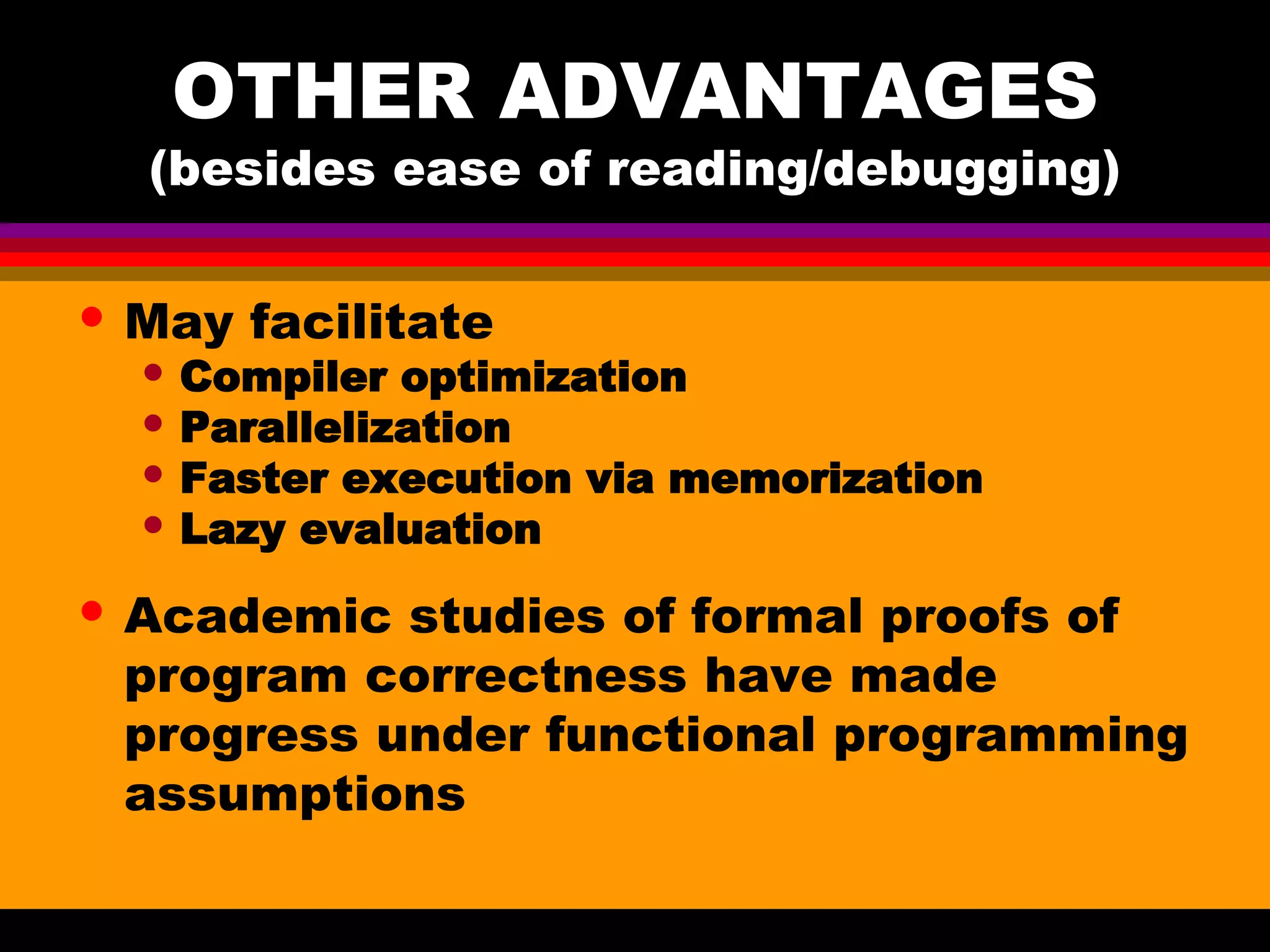
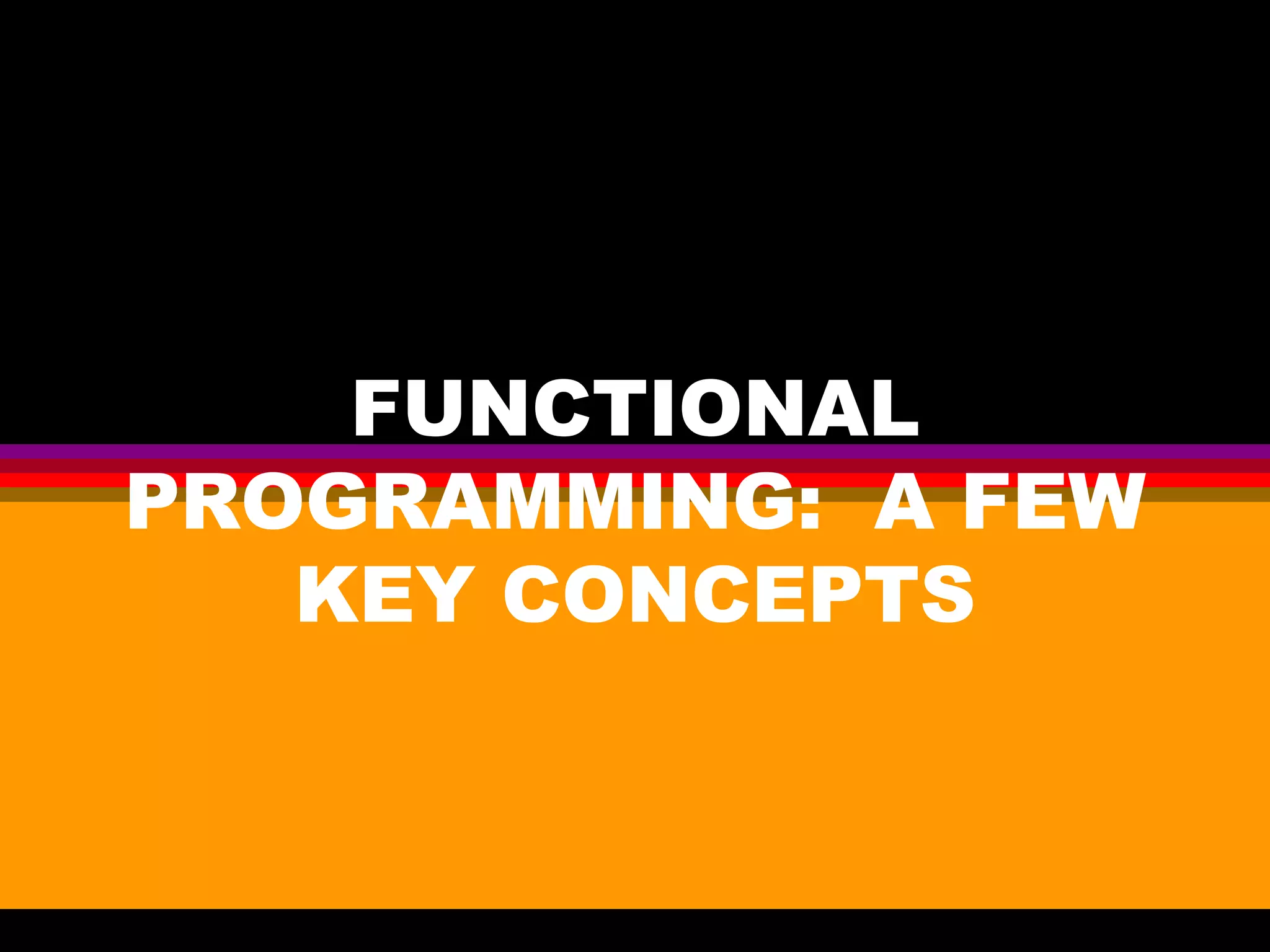
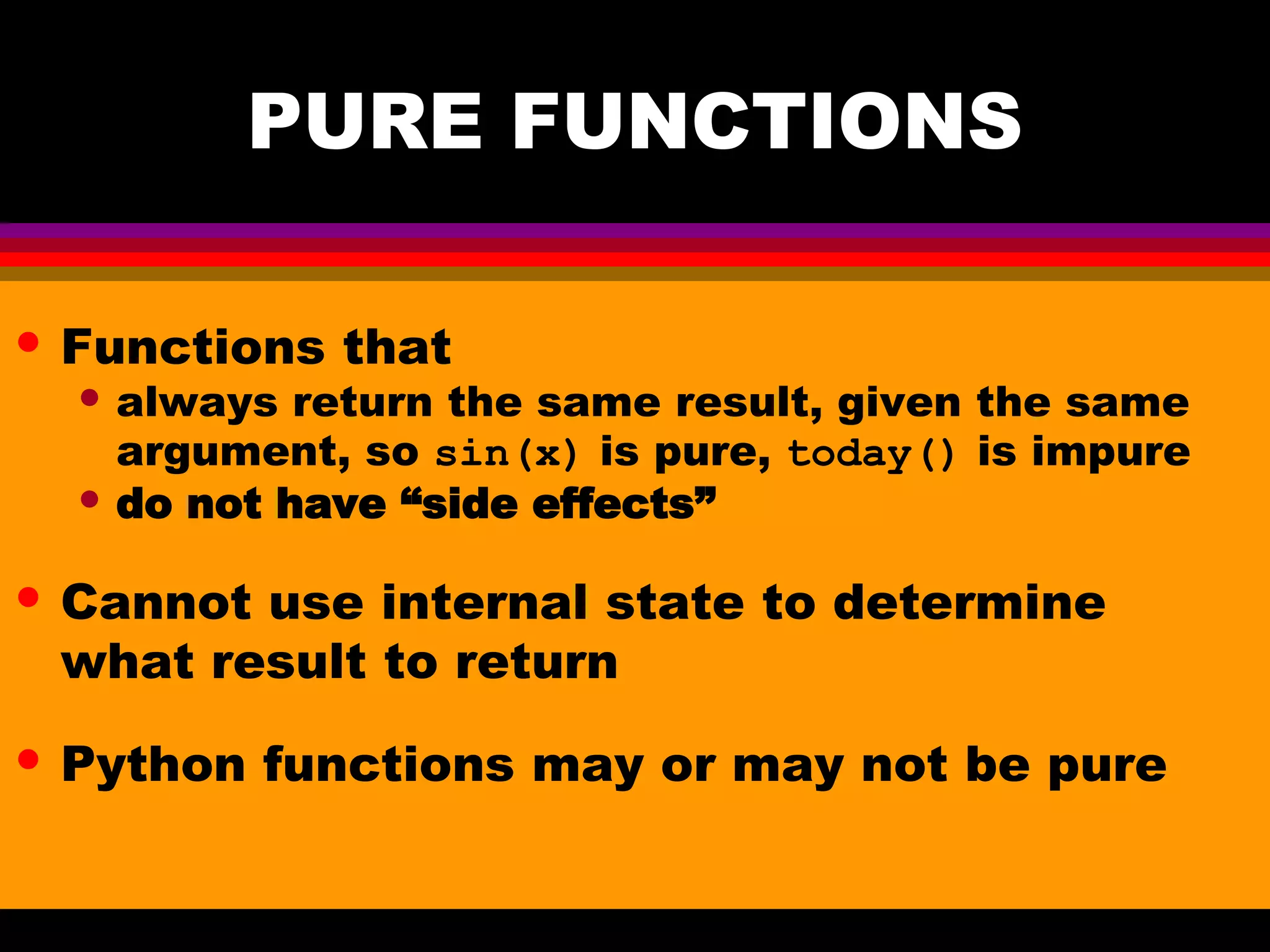
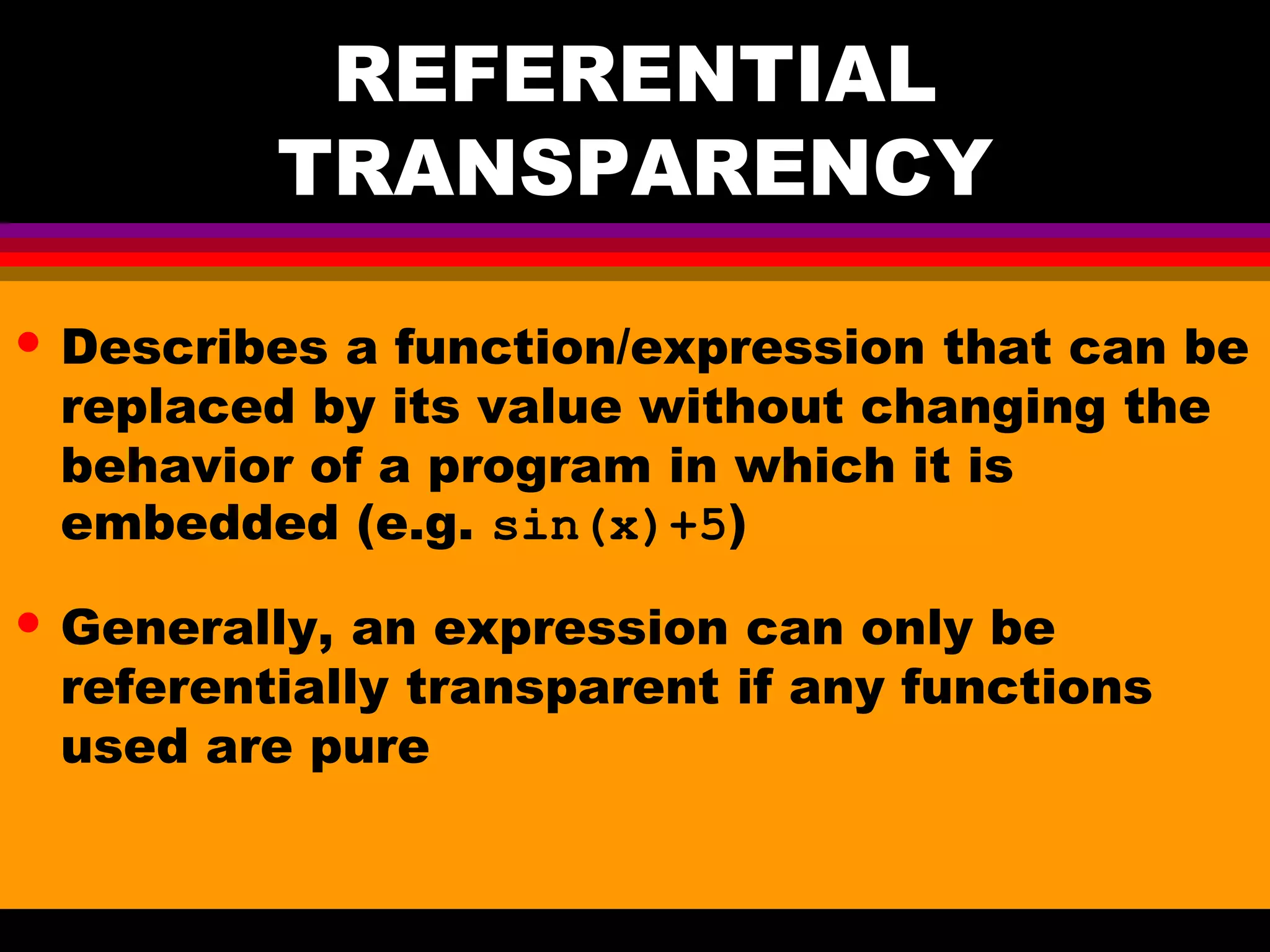
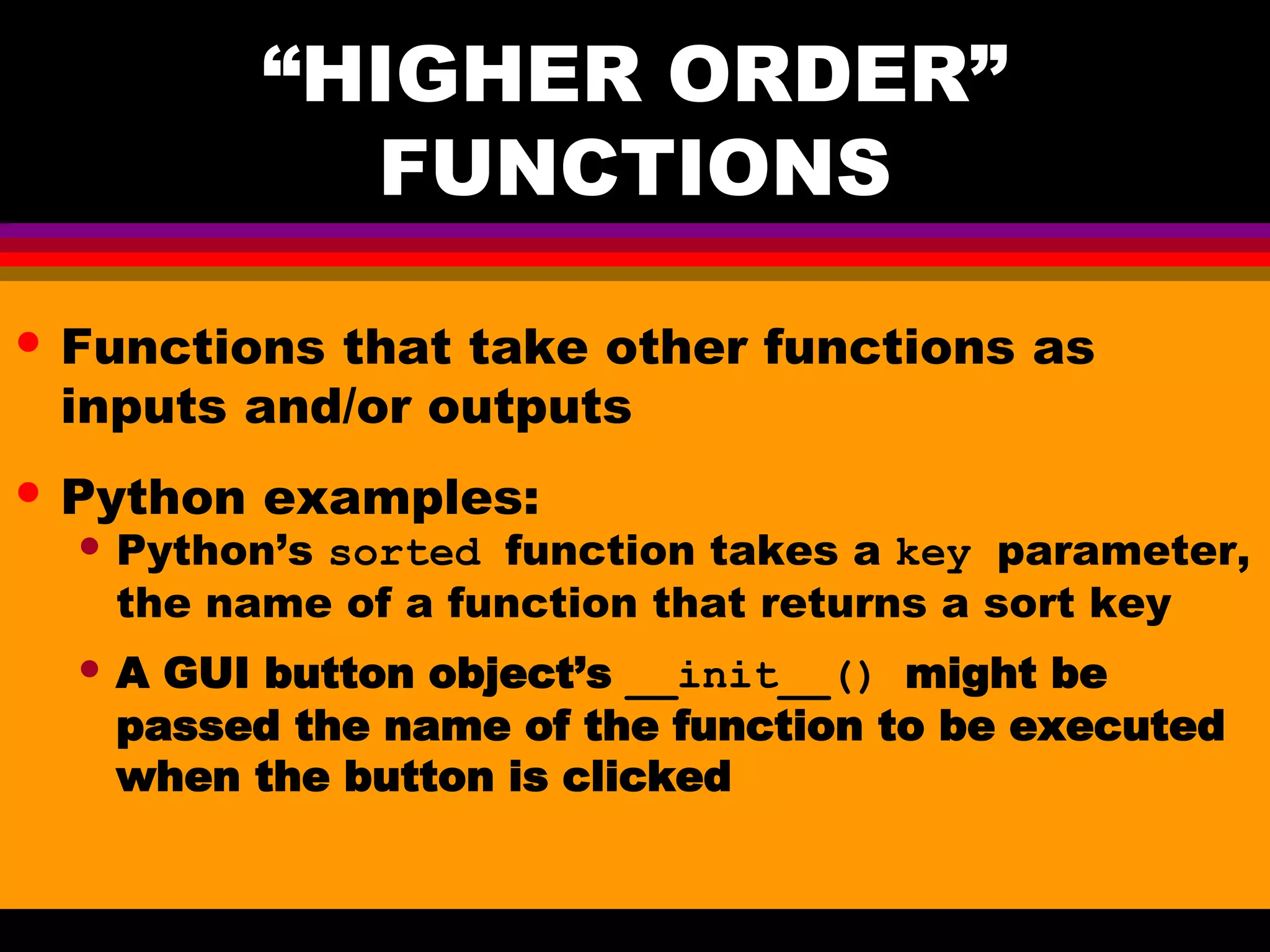
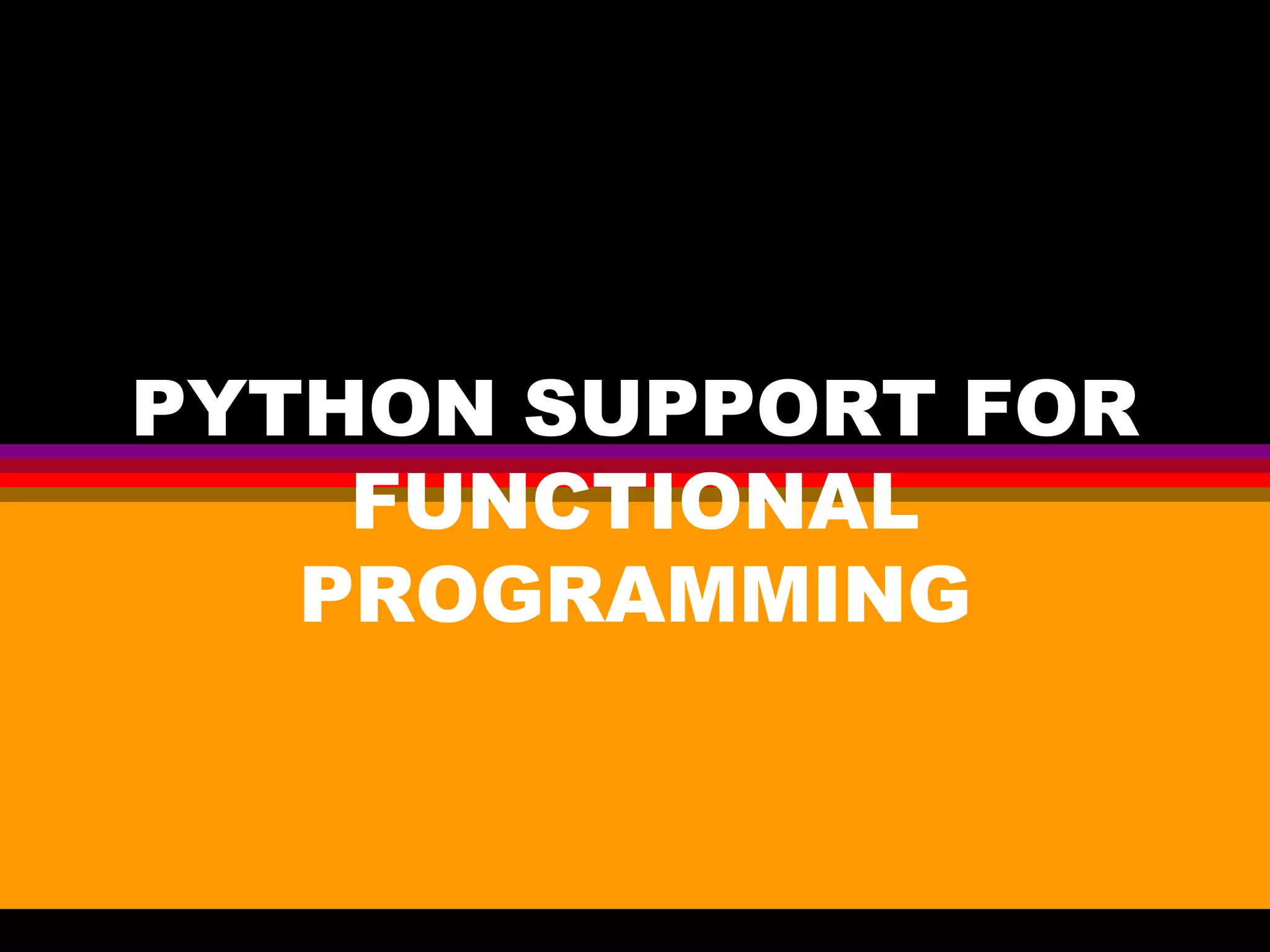
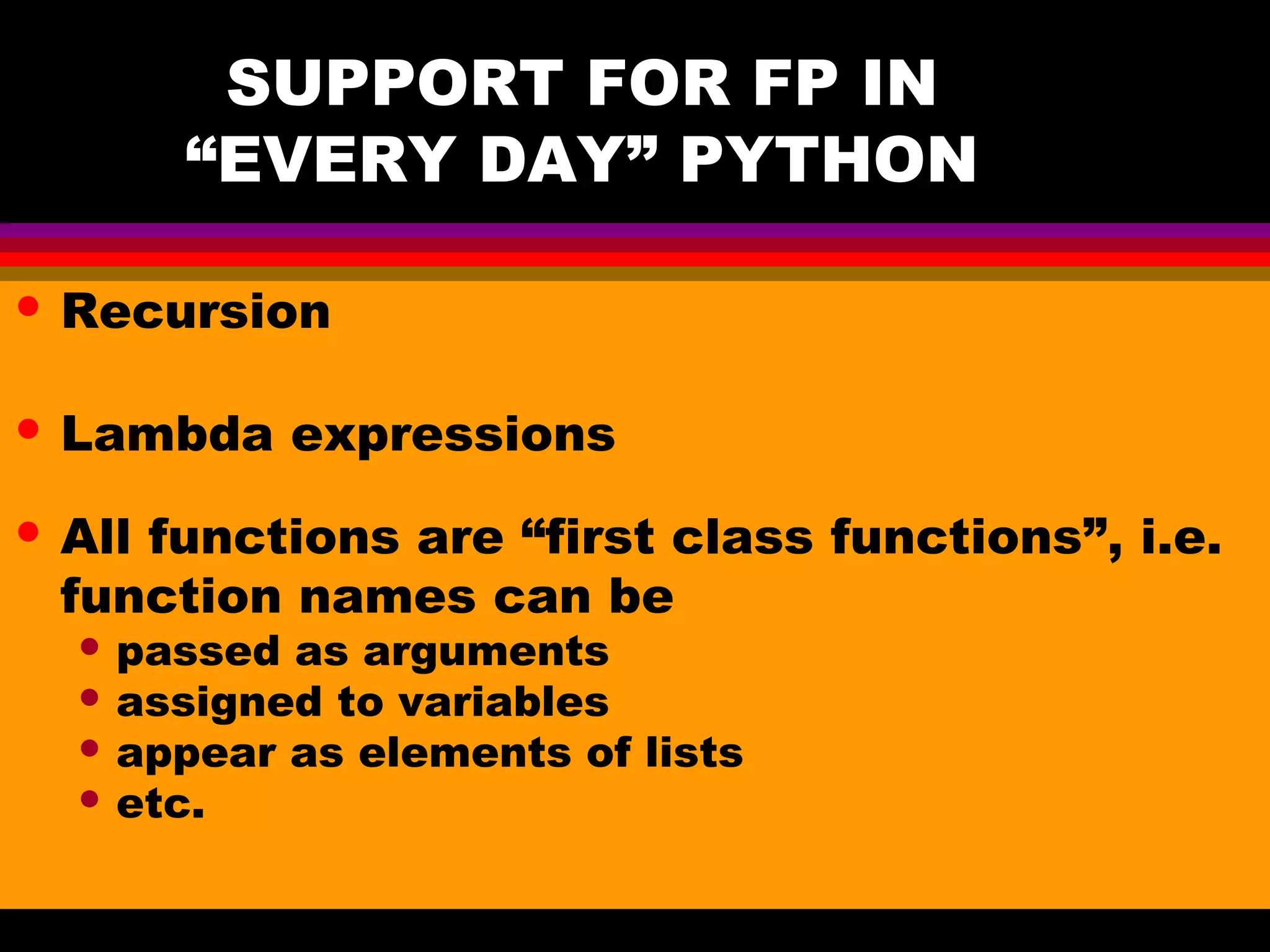
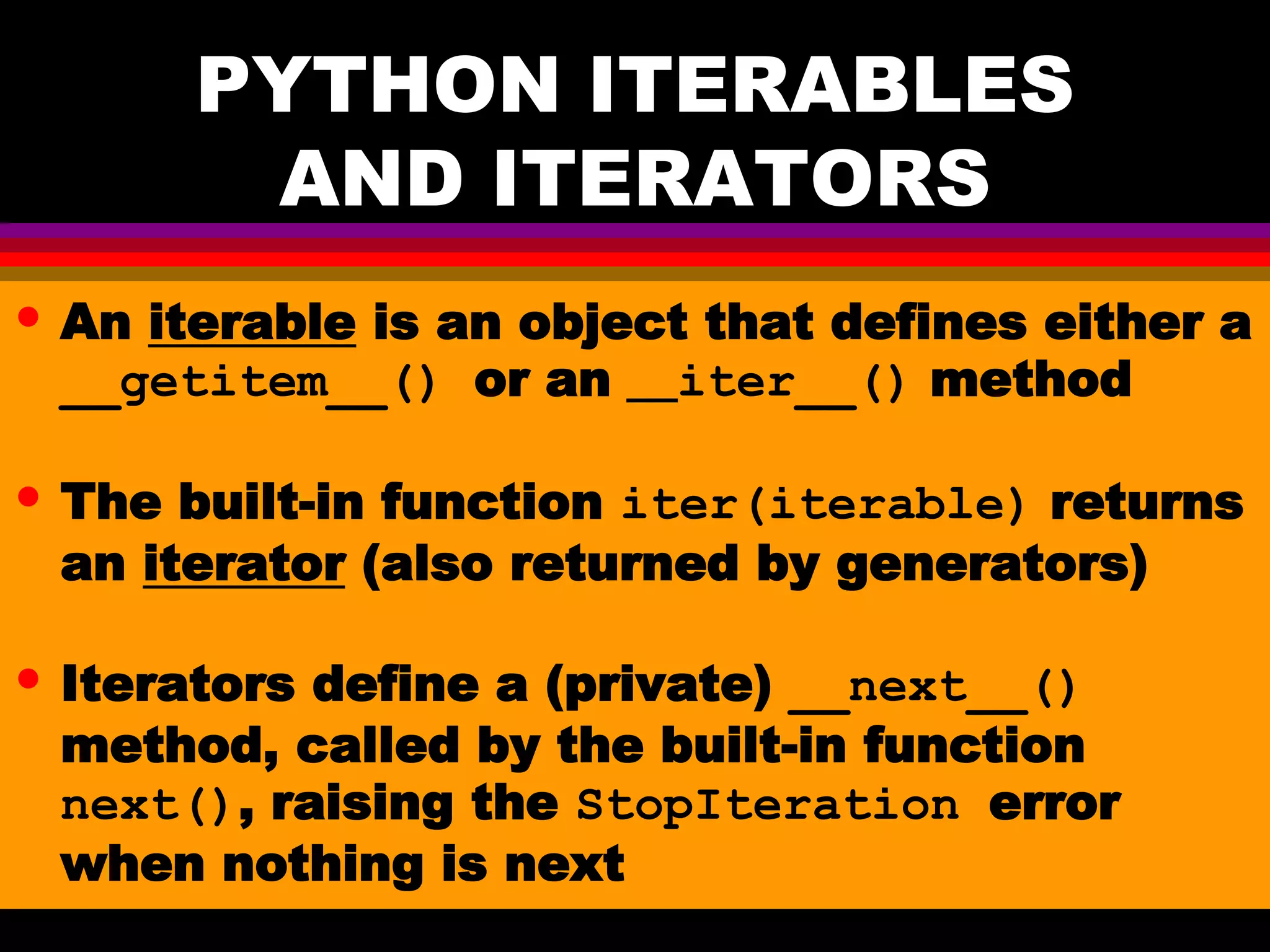
![ITERABLE/ITERATOR EXAMPLE >>> aList = [1, 2] #need not be a list >>> aListIter = iter(aList) #possibly >>> next(aListIter)# lazy evaluation 1 >>> next(aListIter)# 2 >>> next(aListIter) StopIteration Traceback …](https://image.slidesharecdn.com/functionalprogramminginpython-181104005034/75/Functional-programming-in-python-18-2048.jpg)
![Returns an iterator which is the result of applying <function> (of one argument) to successive individual items supplied by <iterable> EXAMPLE: >>> list(map(lambda x: x*x,[1,3,5,7])) [1, 9, 25, 49] map(<function>, <iterable>)](https://image.slidesharecdn.com/functionalprogramminginpython-181104005034/75/Functional-programming-in-python-19-2048.jpg)
![MAP RETURNS AN ITERATOR >>> seq = map(lambda x: x*x, [1, 3, 5, 7]) >>> seq <map at 0x…> >>> next(seq) 1 >>> next(seq) 9](https://image.slidesharecdn.com/functionalprogramminginpython-181104005034/75/Functional-programming-in-python-20-2048.jpg)
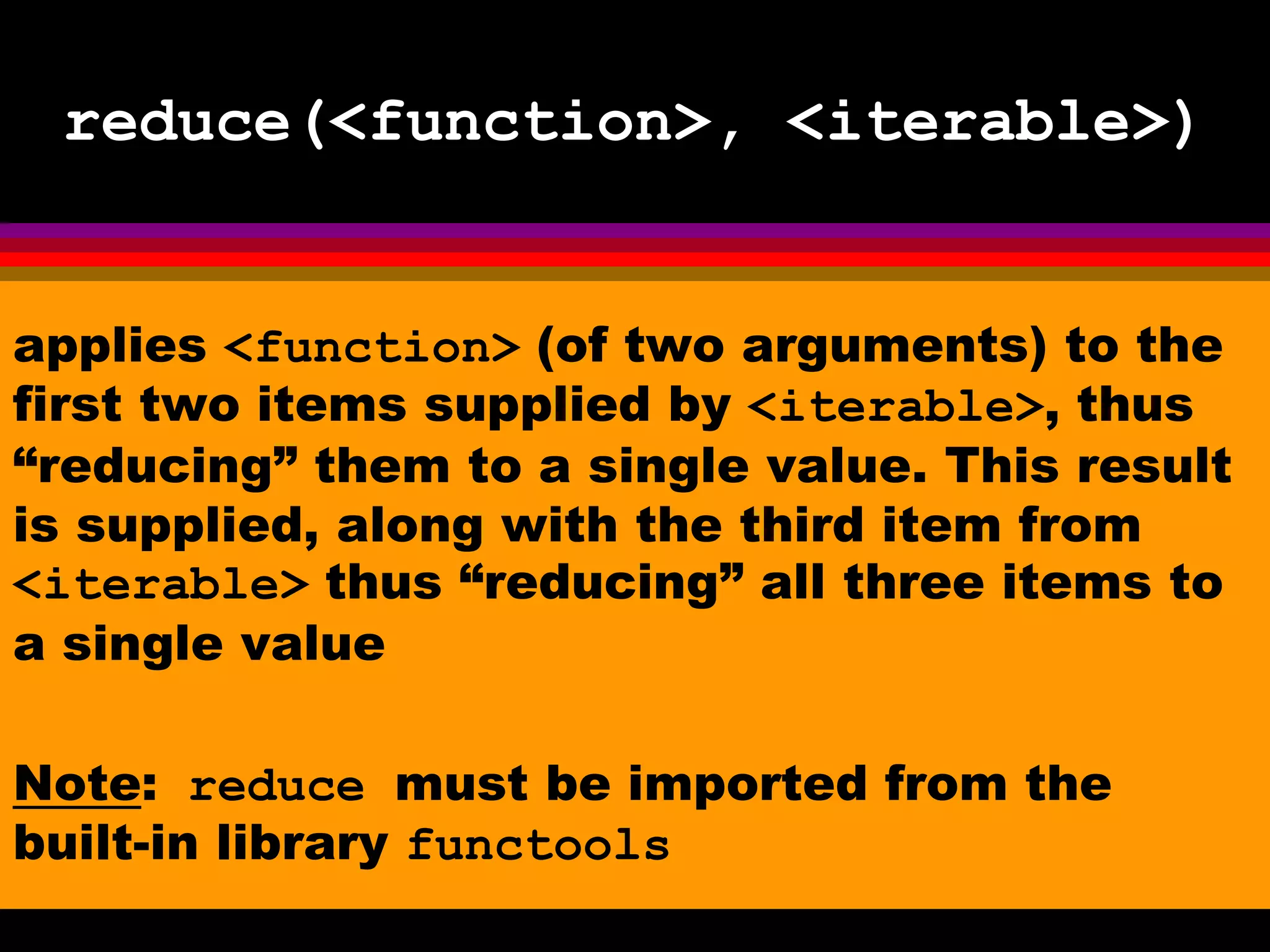
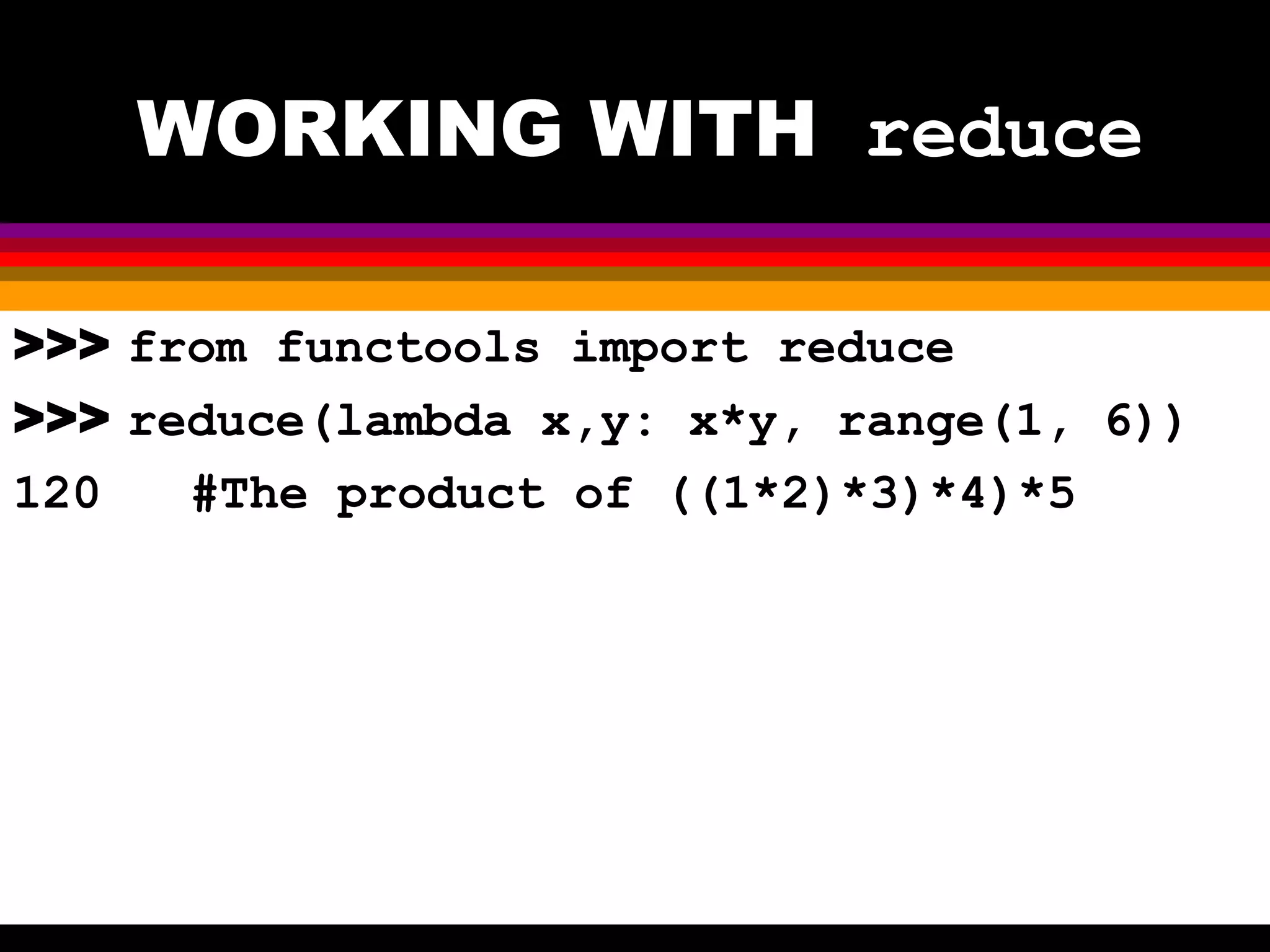
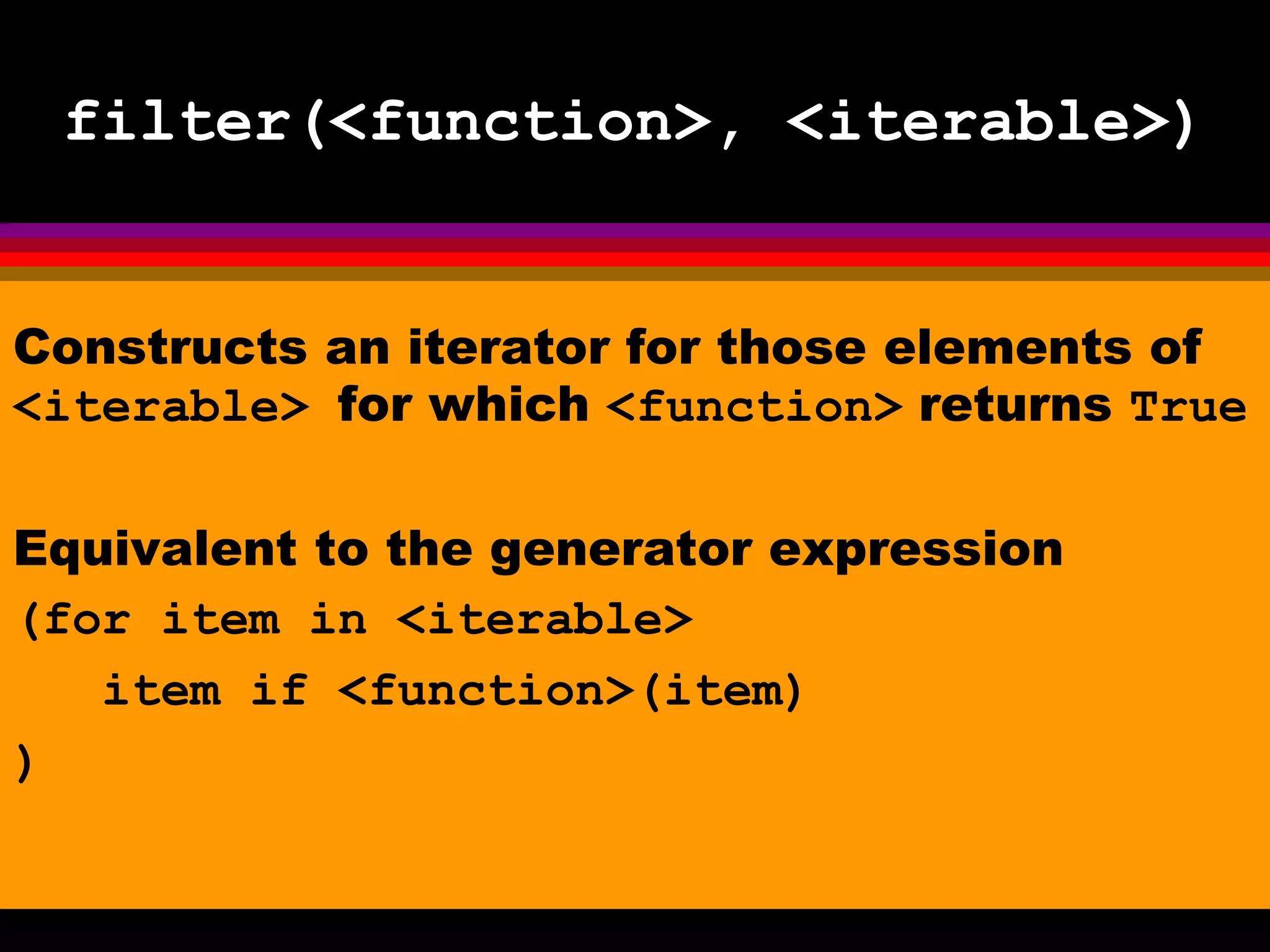
![WORKING WITH filter >>> isEven = lambda x: (x%2 == 0) >>> yetAnotherList = [12, 43, 33, 32, 31] >>> it = filter(isEven, yetAnotherList) >>> next(it) 12 >>> next(it) 32 >>> list(filter(isEven, yetAnotherList)) [12, 32]](https://image.slidesharecdn.com/functionalprogramminginpython-181104005034/75/Functional-programming-in-python-24-2048.jpg)
![AN EXTENDED EXAMPLE min_order = 100 invoice_totals = list( map(lambda x: x if x[1] >= min_order else (x[0], x[1] + 10), map(lambda x: (x[0],x[2] * x[3]), orders)))](https://image.slidesharecdn.com/functionalprogramminginpython-181104005034/75/Functional-programming-in-python-25-2048.jpg)

